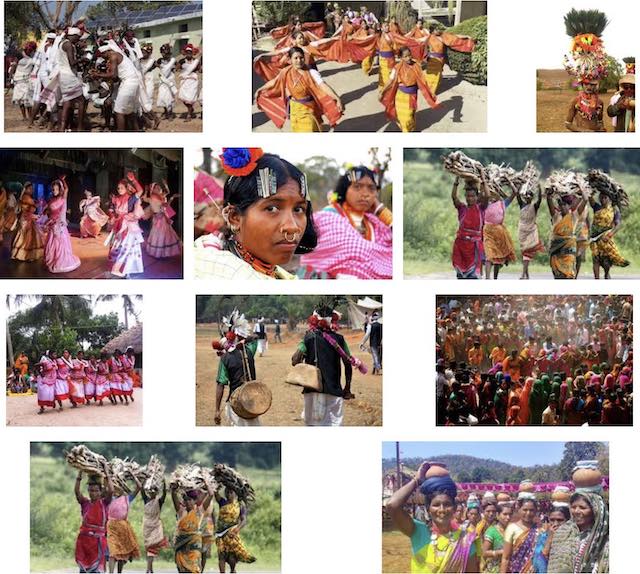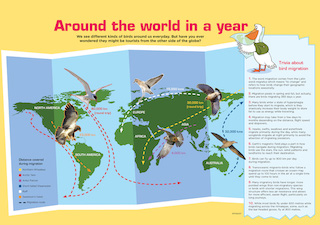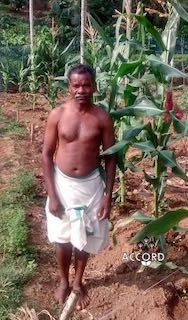The Baiga tribals in Chhattisgarh have been repeatedly facing displacement from their home and forest-dependant livelihood over the years with more areas being notified as reserve forests in the State […]
Old-timers like Sunarin can hardly see and doesn’t know her age, but remembers that she and some of the people in this village have been evicted many times. “First we lived in the hills in Boirha and nearby. We travelled a lot before ending up here. Now we hear there is some sanctuary and we could be moved out again,” Sunarin grins.
Rashmi Dwivedi of Baiga Mahapanchayat, Chhattisgarh says that she has recorded the movement of this group of people since 1989 and found that they have been chased out of settlements 12 times.
“At first, the Forest Department opposed the shifting cultivation or bewar that the Baigas practised. They brought us down from the hills and made us give up bewar,” recalls Sunarin. She recites the names of the 16 types of seeds they used to plant every monsoon, including millets, vegetables and nutritious plants. That biodiversity is almost extinct now and they grow mostly paddy and some greens now.
The Forest Department is not comfortable with the Baigas residing in the core area and even more displeased with Ms. Dwivedi who is perceived as someone “who is encouraging the Baigas to clear land and settle down.” While there has been no formal notification to relocate Ghameri yet, people have been told by Forest Department officials that they will have to leave eventually since plans are afoot to relocate 15 of the 19 villages. […]
The Rajak village with 60 families is on the list of five which the Forest Department wants to relocate this year. “The beat guard is telling us that we have to move. There is little information on where to. We have seen some forest land at Tilwankhar. We will go if we have no choice,” says Andhru. His wife Chaiti, however, is defiant: “There is no way I will leave this village. Our forefathers are buried here. Why should we leave?”
The Baigas in the six villages already relocated from the Achanakmar Tiger Reserve in 2009 are facing issues of livelihood. The land given to them, two hectares per family, is newly-cleared forest land (diverted after due permission) — some with large tree stumps, uneven and without proper embankments. “Right now it is difficult to grow anything on it but we are trying,” says Manmati, a resident of the new Jalda village. […]
In Bokhra Kachchar, Gulab Singh says that healthcare facilities are at Kudhiya which is about three km away but there is no money to pay. “We leave it to God if we fall ill. The Baigas are not used to chemically grown food,” he adds. His words reflect the general feeling of despair when he talks about his life in the forest.
Ironically, three of these six villages — Kuba, Bahaud and Jalda — are located in the natural corridor with Kanha and on the periphery of the tiger reserve, say conservation activists who predict increased man-animal conflicts in the future in these areas in the absence of a proper wildlife management plan. […]
Some distance away, at Tedgi Mahua, a new settlement has sprung up for sheltering the displaced from Bhoramdeo. There is no access road and the village is located behind a hill across a stream. The new place is over 30 km away from their old home inside the forest. They have a school and water supply thanks to the local panchayat office. The only thing they lack is a road but they have learnt to live without it. […]
Jasvirsingh S. Chouhan, field director of Kanha Tiger Reserve, says there was no proposal to move villages out of the buffer zone and they had nothing to do with the Baigas’ relocation.
Source: Forest versus forest folks | The Hindu
Address : https://www.thehindu.com/features/metroplus/society/forest-versus-forest-folks/article3723261.ece
Date Visited: 28 January 2022
[Bold typeface added above for emphasis]
Up-to-date reports by Indian experts and journalists
Search tips
Combine the name of any particular state, language or region with that of any tribal (Adivasi) community.
Add keywords of special interest (music, poetry, dance just as health, sacred grove and biodiversity); learn about the rights of Scheduled Tribes such as the “Forest Rights Act” (FRA); and the United Nations “Declaration on the Rights of Indigenous Peoples”, “Universal Declaration of Human Rights”, “women’s rights”, or “children’s right to education”.
Specify any other issue or news item you want to learn more about (biodiversity, bonded labour and human trafficking, climate change, ecology, economic development, ethnobotany, ethnomedicine, global warming, hunter-gatherers in a particular region or state, prevention of rural poverty, water access).
For official figures include “scheduled tribe ST” along with a union state or region: e.g. “Chhattisgarh ST community”, “Himalayan tribe”, “Scheduled tribe Tamil Nadu census”, “ST Kerala census”, “Particularly Vulnerable Tribal Group Jharkhand”, “PVTG Rajasthan”, “Adivasi ST Kerala”, “Adibasi ST West Bengal” etc.
In case the Google Custom Search window is not displayed here try the following: (1) toggle between “Reader” and regular viewing; (2) in your browser’s Security settings select “Enable JavaScript” | More tips >>
Note: hyperlinks and quotes are meant for fact-checking and information purposes only | Disclaimer >>
List of websites covered by this Google custom search engine
Academia.edu (platform for academics to share research papers) – www.academia.edu
Archive.org – https://archive.org
Centre for Science and Environment – https://www.cseindia.org
Current Conservation – https://www.currentconservation.org
Development and Cooperation (D+C) https://www.dandc.eu
Down To Earth (India) – www.downtoearth.org.in
India Environment Portal – www.indiaenvironmentportal.org.in
Harnessing Nature Magazine – https://harnessingnature.online
Mongabay-India – https://india.mongabay.com
M S Swaminathan Research Foundation – www.mssrf.org
Navdanya (protecting India’s biodiversity based food heritage) – https://navdanya.org
Third World Network (Penang, Malaysia) – https://twn.my
The Shola Trust (nature conservation in the Nilgiri region) – www.thesholatrust.org

Indian online periodicals and platforms | Images view >>
~ ~ ~
Personalize your CustomSearch by combining other search words >>
(e.g. name of a tribal community and region, a craft, or dance and puppetry)
Research the above issues with the help of Shodhganga: A reservoir of theses from universities all over India, made available under Open Access >>
Note: hyperlinks and quotes are meant for fact-checking and information purposes only | Disclaimer >>
See also
For additional learning resources visit the website of the Centre for Science and Environment (CSE), “a public interest research and advocacy organisation based in New Delhi”:
Communication for Awareness
CSE’s publications and informational products have been its strength and they have always combined research and readability to get the message across.

CSE’s tools for awareness raising are periodicals, publications, films/short spots, briefing papers, exhibitions, posters and other products. CSE’s informational products reach people in more diverse ways such as features service, website and e-news bulletins. […]
Source: About CSE
URL: https://www.cseindia.org
Date Visited: 10 July 2022
